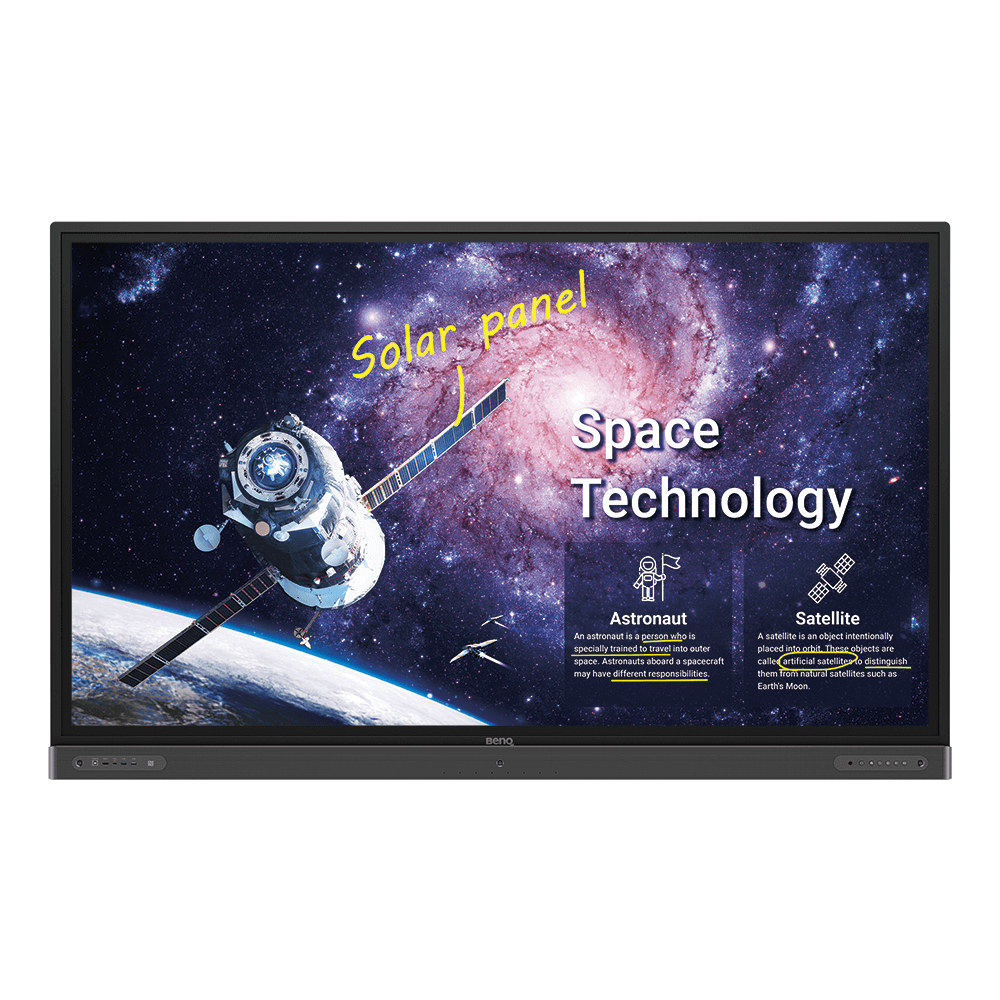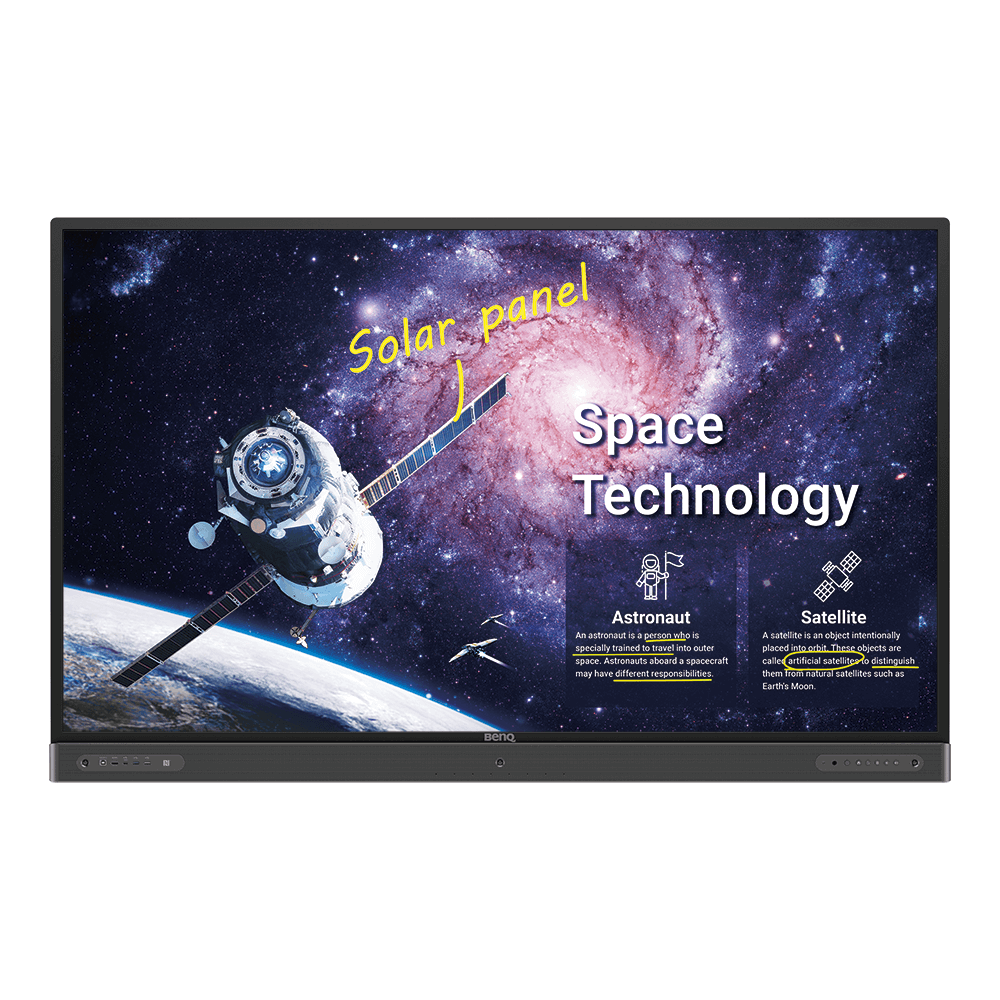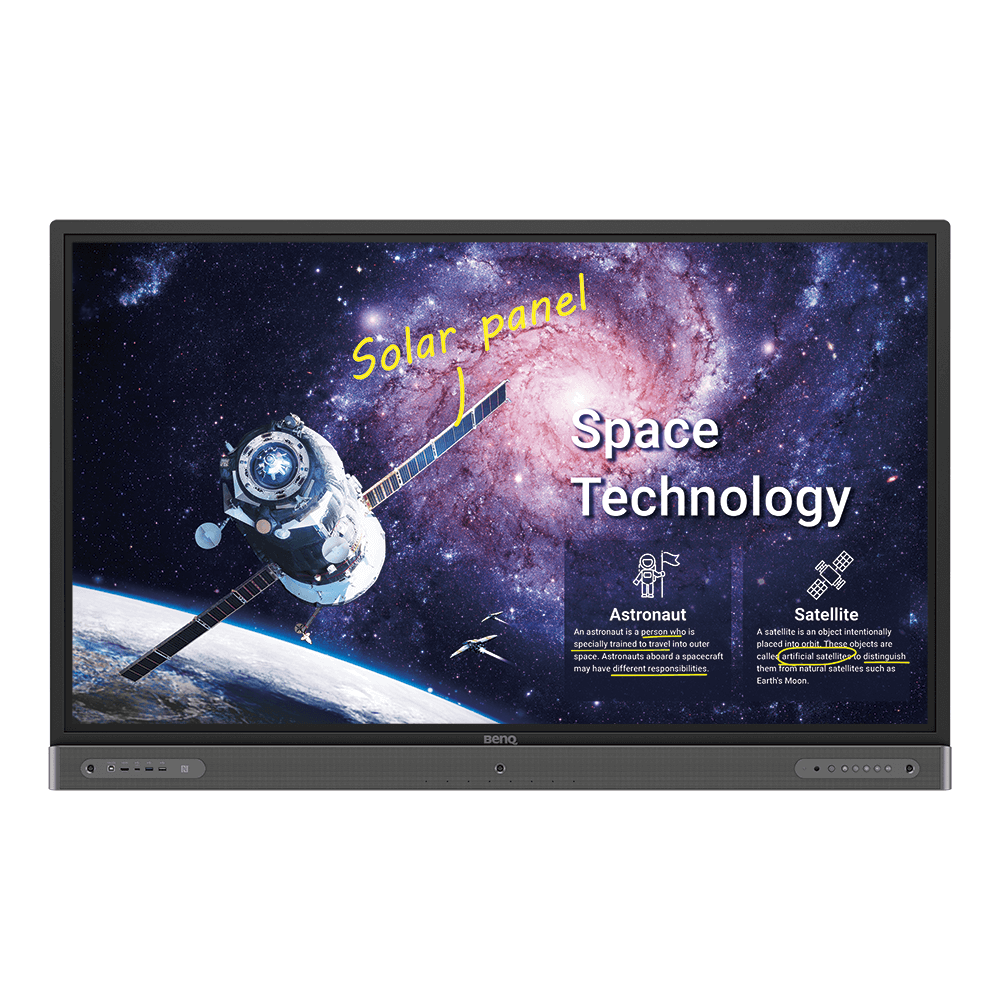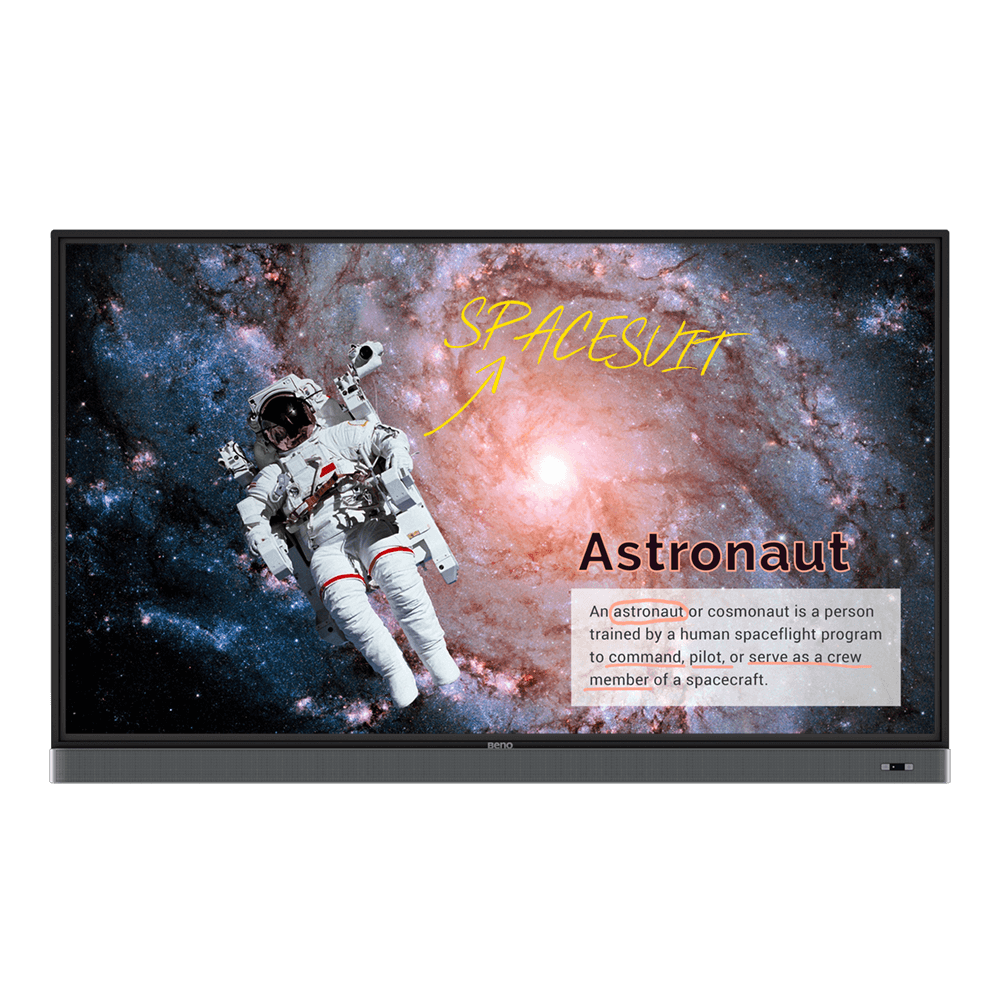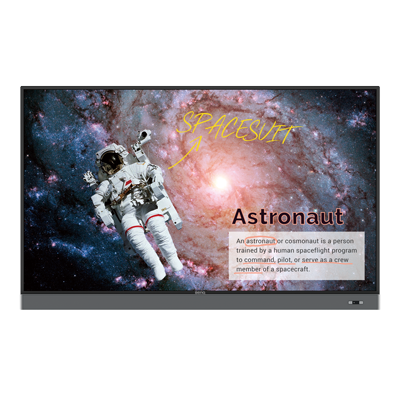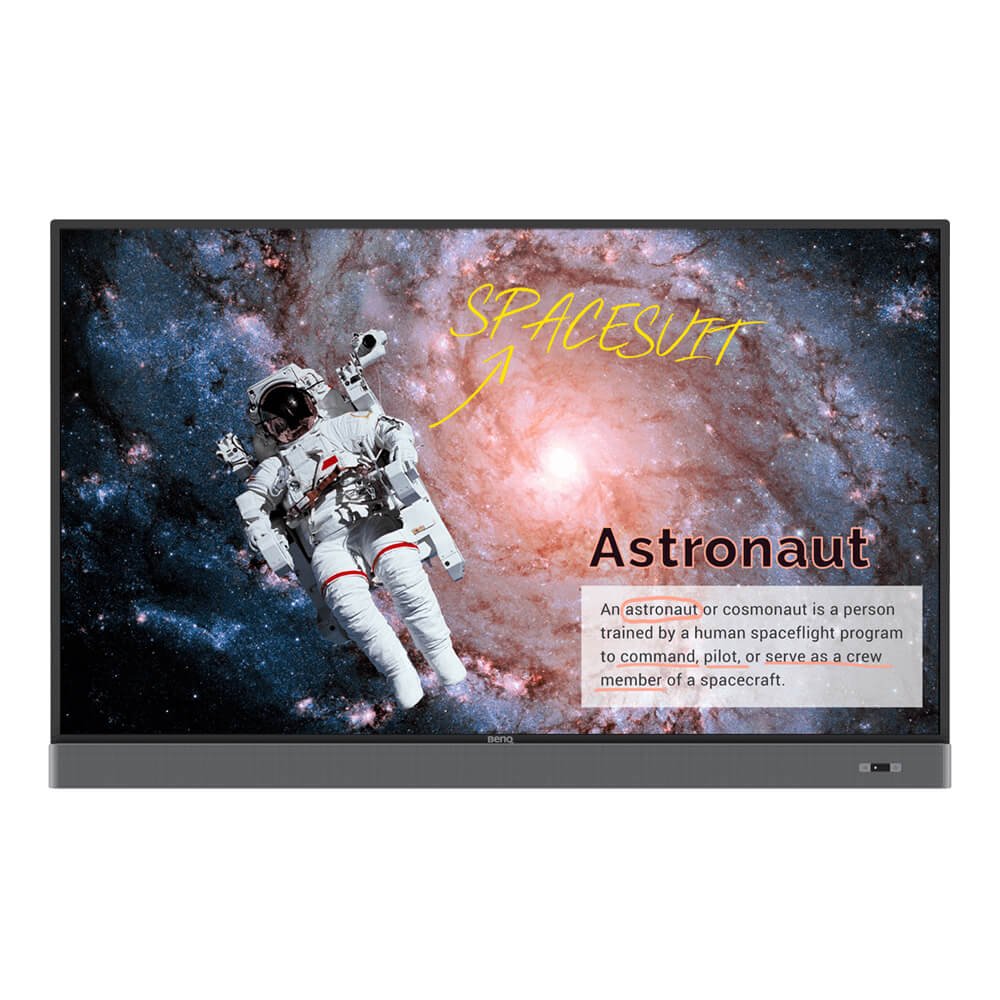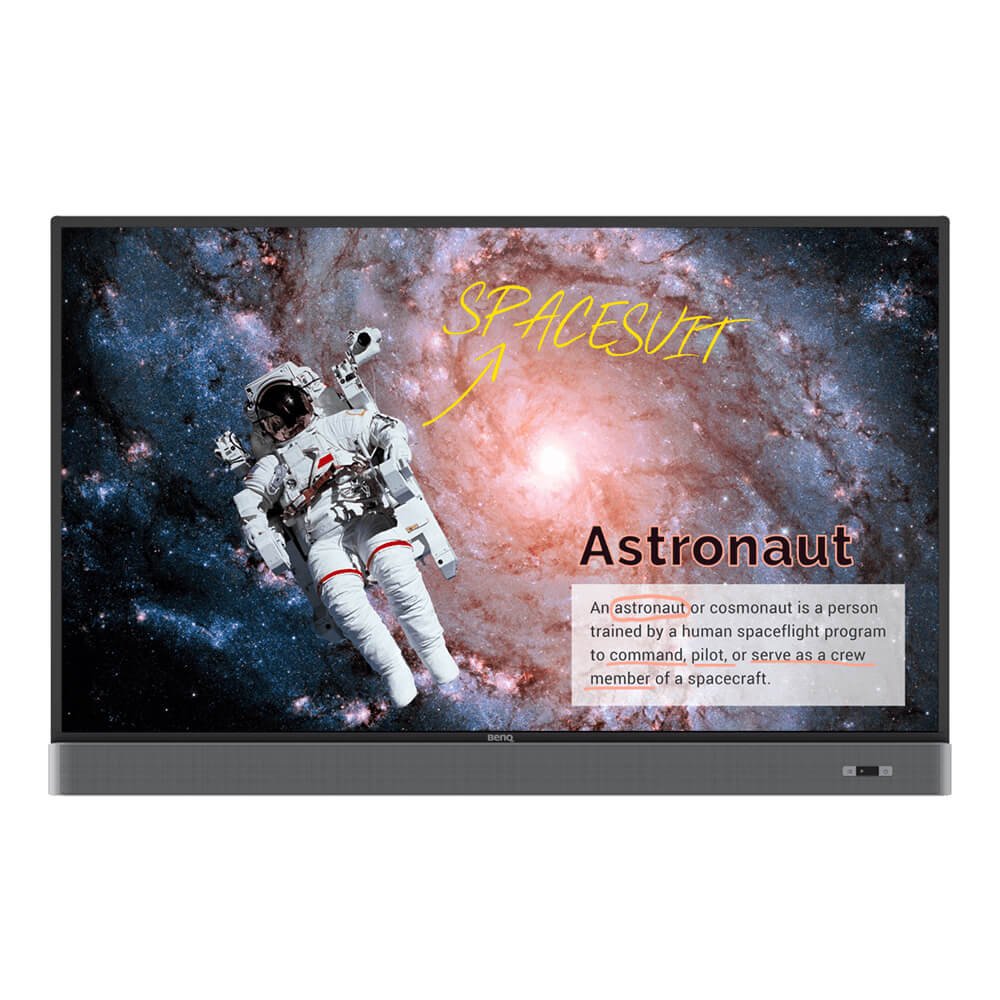Samsung Flip 3 vs. BenQ Board RP Series
- BenQ
- 2021-07-01
These two powerhouse brands both have classroom displays with anti-microbial screens. How do they stack up for classroom use?
BenQ and Samsung are two of the world’s largest display brands in the world. As schools transition from interactive whiteboards to interactive displays, IT managers are looking at alternatives to the traditional proprietary systems from Smart and Promethean. Both Samsung and BenQ compete aggressively in other display products such as monitors, and digital signage, but BenQ has more experience in classroom projectors and classroom wireless presentation systems. The BenQ RP Series and Samsung Flip 3 are the latest offerings from both companies for classroom interactive displays, so how do these latest models compare?
Here are the key elements to review:
A display that is easy to read is a key feature in any classroom display. District technology professionals are keenly aware for years that brighter displays with high contrast ratios are easier for students to read – especially from the back of the room.
The BenQ RP Series is over 20% brighter than the Samsung – and delivers higher contrast for easy to read text. Also – Samsung does not disclose how long the panel is rated for – while the BenQ is rated at 50,000 – over 15 years under normal classroom use.
Specification |
BenQ Board RP02 – 75” |
Samsung Flip 3 – 75” |
Specification Brightness | BenQ Board RP02 – 75” 450 nits | Samsung Flip 3 – 75” 350 nits |
Specification Dynamic Contrast | BenQ Board RP02 – 75” 40,000:1 | Samsung Flip 3 – 75” 4000:1 |
Specification Expected Life | BenQ Board RP02 – 75” 50,000 hours | Samsung Flip 3 – 75” Not specified |
Interactive displays are the ideal teaching platform for a hybrid classroom. With the ability to run a Zoom or Team app directly from the display, as well as record and share lessons, these displays are far more functional than a projector or interactive whiteboard. So what are the functional whiteboard features you want to look for when comparing these two displays?
Touch Sensor Technology: BenQ Fine IR vs. Samsung IR
To better simulate the experience of using a real marker, the best interactive displays use highly sensitive IR touch systems that optically bond the sensor to the glass – enabling a near-instant response and a smoother, more intuitive writing experience. The BenQ system is called “FineIR,” Promethean’s system is called Vellum, while the SMART version of this is called HyprTouch. The Samsung Flip 3 uses a traditional IR sensor system similar to the BenQ RM or RE interactive displays.
Whiteboard Object Recognition
Both models recognize 20 points of touch using the Android systems built into the display, palm eraser recognition and can recognize inputs from both pens and fingers. Both displays also support variable width input devices – such as a regular paintbrush. This is ideal for drawing non-Latin characters such as Kanji or Arabic characters, as well as for illustrations.
In-Person vs Cloud Whiteboarding
Classroom and commercial environments are quite different, and many schools believe that cloud-based whiteboarding was an important innovation – even before the Covid-19 pandemic hit.
BenQ is notable for having developed the world’s first dynamic cloud whiteboarding system in a classroom touch panel. With the teacher in the classroom, students can interact with the board in real-time via their device at home, making it easy for remote tutoring or coaching. For example, the teacher can send a link or a QR code and broadcast directly from the board to a student's Chromebook or iPad logged into their home network. The teacher can also allow the student to interact directly on the board with the device with a single tap on the whiteboard – say to allow the student to solve the math problem on the board. Since the system is network agnostic, it enables unprecedented flexibility to both teachers and students that complement other classroom systems such as Zoom or Teams. Powerful cloud whiteboarding features like this are why BenQ’s RP series is the world’s most awarded education touch display. There are no additional licensing fees for this software for the life of the display.
The Samsung Flip 3 does not come with any cloud-based whiteboarding software. Samsung has an agreement with a third-party company to resell classroom software, which requires an annual subscription. For IT managers, this represents an additional cost. According to the COSN TCO Calculator, this cost should be factored into your total cost of ownership calculation for the expected life of the display.
Whiteboard Functionality |
BenQ Board RP02 – 75” |
Samsung ViewBoard 52 – 75” |
Whiteboard Functionality Touch Sensor | BenQ Board RP02 – 75” Premium Zero Bond Optical Touch Sensor | Samsung ViewBoard 52 – 75” IR Sensor |
Whiteboard Functionality Shape Recognition | BenQ Board RP02 – 75” Palm Eraser Paintbrush width recognition for calligraphy / non-Latin Characters | Samsung ViewBoard 52 – 75” Palm Eraser Paintbrush width recognition for calligraphy / non-Latin Characters |
Whiteboard Functionality Cloud Whiteboarding | BenQ Board RP02 – 75” Included at no cost | Samsung ViewBoard 52 – 75” None – Must subscribe to third party software at extra cost |
The ability to record, store and replay lessons to students who are not in the classroom is a key element in improving student performance in hybrid classrooms. Why? If a student misses a day or two of Geometry class – it could take a long time to catch up to the rest of the class. These two interactive displays have the right hardware, software, and networking architecture for recording a classroom lesson - but what should you look for to ensure your teachers can easily store and share their lessons?
How easy is it to record the lesson from the interactive display?
The best interactive displays make it simple to record any lesson – at any time – using any software running on the panel – and store that lesson anywhere on the school network or the cloud.
The BenQ RP interactive display enables instant recording directly on the board from any application with a single two-finger tap. This enables a teacher to record any lesson – without having to open another application. Just tap the screen and hit record – that simple. This system has been tested with private and public schools around the world for years to learn how to make it easier for teachers to record their classes.
The Samsung Flip 3 does not come with any classroom recording software or instructions.
Array Microphone and Speakers
Teachers have known the most effective lessons combine both visual and audio information. So how well do the BenQ RP and Samsung have state-of-the-art array microphones built into the display to capture the teacher’s voice for lesson recording?
The BenQ RP series interactive board comes with a bi-directional 8-microphone array built-in capable of recording the teacher’s voice from 15 feet away. This system has advanced sound recognition software similar to a smartphone that cancels out background noise and “follows” the teacher as they move around the room. This bi-directional also enables a teacher to record simultaneously with other audio sources, such as commenting on a YouTube video running on the display.
The Samsung Flip 3 does not have any microphone system included in the display. This means a school must provide and install a third-party microphone at extra cost.
Classroom and Lesson Recording |
BenQ Board RP02 – 75” |
Samsung Flip 3 |
Classroom and Lesson Recording Recording method | BenQ Board RP02 – 75” Simple Two Finger Tap from any application | Samsung Flip 3 No recording software included |
Classroom and Lesson Recording Integrated Microphone | BenQ Board RP02 – 75” 8 microphone array built-in | Samsung Flip 3 No microphone included |
Classroom and Lesson Recording Speakers | BenQ Board RP02 – 75” 32 Watt Soundbar 15 Watt Subwoofer | Samsung Flip 3 20 Watt Soundbar
|
In 2020, the COVID-19 pandemic created a new paradigm for schools and elevated the need for student and teacher safety. BenQ has been integrating key safety features into their displays since 2017, and the latest models from BenQ RP Series and Samsung Flip 3 have a variety of safety features that school administrators are looking for. Here is a breakdown of the important safety features on each display.
Tempered Glass with Anti-Glare coating
Both Samsung and BenQ displays feature heat-tempered hardened glass, that is designed to withstand a significant impact from an errant football or elbow, and will shatter into small pieces if broken to reduce the hazard of a student suffering a deep cut on exposed glass. The hardness is measured by a MOHS scale, and the BenQ has a 9 out of 10 rating, but Samsung does not specify the hardness rating for the glass used on the display. Both models are treated to reduce glare.
Anti-Microbial Coatings
Antimicrobial coatings are used in surgical lighting and other sensitive areas to keep germs from growing on the display. This feature has been available from BenQ since 2018 and is also available on other brands of interactive displays. The BenQ RP series has been certified by Europe’s TUV against the five most common types of bacteria, including e. Coli, Salmonella, and pneumonia. The BenQ display is also certified as classroom safe and toxin-free under Japan’s SIAA standard tests for potential risks such as long-term touch and oral toxicity.
The Samsung Flip 3 also has an antimicrobial coating and has been certified for two types of bacteria. The formula is different from BenQ’s and Samsung has a “Haze” specification of between 8-12% that is not typically present on other antimicrobial classroom displays. This may mean that the text on the display is not as sharp.
Blue Light Protection
The BenQ RP Series interactive displays come standard with third-party certified blue light filtering features built-in. The sensor on the BenQ’s display senses when a teacher or student approaches the display – will adjust the blue light automatically, minimizing the risk to students and teacher from excessive blue light exposure.
The Samsung Flip 3 does not have any low blue light certifications or list this as a feature on their product.
Classroom Air Quality
Recent studies have even demonstrated that higher levels of CO2 in a room cause people to become drowsy and pay less attention. Companies such as 3M have been working hard to improve the quality of the air in classrooms using advanced filters. But can teachers and facilities managers tell if it is working?
The BenQ RP interactive display comes with a built-in CO2 meter that alerts the teacher it’s time to open a window. BenQ even takes this approach a step further, and will also alert the teacher if levels of dust and particulate matter in the room are dangerously high.
Teacher and Student Safety Features |
BenQ Board RP02 – 75” |
Samsung Flip 3 – 75” |
Teacher and Student Safety Features Tempered Glass Hardness Level (MOHS) | BenQ Board RP02 – 75” 9 | Samsung Flip 3 – 75” Not Specified |
Teacher and Student Safety Features Antimicrobial Glass Germ Certifications | BenQ Board RP02 – 75” TUV Certifications (5) SIAA Toxin Free | Samsung Flip 3 – 75” Two Certifications |
Teacher and Student Safety Features Blue Light Protection | BenQ Board RP02 – 75” Yes TUV Certified | Samsung Flip 3 – 75” No |
Teacher and Student Safety Features Flicker-Free Backlight | BenQ Board RP02 – 75” Yes TUV Certified | Samsung Flip 3 – 75” No |
Teacher and Student Safety Features Air Quality Monitor | BenQ Board RP02 – 75” CO2 Dust / Particulate (2 sizes) | Samsung Flip 3 – 75” None |
Managing a large number of classroom interactive displays requires an effective remote management software system or Device Management Systems (DMS). BenQ includes a license-free system that permits admins to push settings, updates, apps, and campus-wide text and video messages to any or all boards in their network.
Samsung does not offer a remote device management system but indicates that schools can purchase them from third parties at an additional cost.
Device Management System |
BenQ DMS & X-Sign |
Samsung Flip 3 |
Device Management System Interactive Display Control & Monitoring | BenQ DMS & X-Sign Yes | Samsung Flip 3 No |
Device Management System Remote App Management | BenQ DMS & X-Sign Yes | Samsung Flip 3 No |
Device Management System Multimedia Message Broadcast | BenQ DMS & X-Sign Yes | Samsung Flip 3 No |
Device Management System Task Scheduling | BenQ DMS & X-Sign Yes | Samsung Flip 3 No |
Device Management System Display Analytics | BenQ DMS & X-Sign Yes | Samsung Flip 3 No |
Device Management System Projector Support | BenQ DMS & X-Sign Yes – including Epson, NEC, and Maxell projectors | Samsung Flip 3 N/A |
Device Management System License timeframe | BenQ DMS & X-Sign Lifetime of Display | Samsung Flip 3 N/A |
For Teachers - Account Management and Logging-In
Both the BenQ RP have two very different approaches to enable teachers to securely log into the display and access network and cloud files directly from the display.
The BenQ Board RP models are on their third generation of Tap ‘N Teach technology that enables unprecedented teacher access to enable a personalized display with access to cloud-based files from any display on campus. Here’s how it works:
The IT manager creates a teacher account in BenQ’s Account Management System software database by linking it to their Active Directory infrastructure. Then they assign the teacher their specific rights on the panel to keep key network settings from being changed, but enabling the teacher to change their background and which apps are on the main page.
This approach enables IT, managers, to ensure that the settings are correct – and that there are no age-inappropriate apps loaded on the panel (such as FaceBook being on a first-grade teachers' board). Once logged in, all of the network drive from Google, Microsoft OneNote, and school network drives are automatically connected.
The best part about Tap N’ Teach is how easy and fast it is for a teacher to use. Using the same secure technology used for Apple Pay– a teacher simply tap’s the panel with their card or badge – and in a few seconds, the display is personalized for that teacher, complete with background, apps, and network connection. When they are finished – they tap the display again and the display returns to its generic state. Teachers can also use a QR code that will enable them to securely type in a password on the phone to log into the display – avoiding the risk of typing directly on the board in view of the students.
The Samsung Flip 3 doesn’t have any special log-in or account management systems. This means that anyone can change the settings on the board (such as language or network to disrupt the class), and uses a traditional on-screen keyboard when a password is required. If a student is present, it makes it easy for passwords to be stolen.
Teacher Login and Cloud Access |
BenQ Tap ‘N Teach |
Samsung Flip 3 |
Teacher Login and Cloud Access Access Google Drive from the panel | BenQ Tap ‘N Teach Yes | Samsung Flip 3 No automated connection |
Teacher Login and Cloud Access NFC Card Secure Login | BenQ Tap ‘N Teach Yes | Samsung Flip 3 No |
Teacher Login and Cloud Access QR Code Secure Login | BenQ Tap ‘N Teach Yes | Samsung Flip 3 No |
Teacher Login and Cloud Access Active Directory support for Account Management | BenQ Tap ‘N Teach Yes | Samsung Flip 3 No |
So which interactive display is better for me – BenQ or Samsung?
While both models share similar features such as 4K resolution, antimicrobial screen coatings, wireless screen mirroring, and a dedicated OPS slot, understanding the key differences will help you decide which brand of interactive touch display will be right for your classroom.
It’s important to do research and consult important stakeholders before deciding which board your school district should adopt. But there are some major advantages that BenQ brings to the table that can make a difference to a school that might want more flexibility in its curriculum. When deciding on your chosen solution, consider the following differences:
- The BenQ board is over 20% brighter than the Samsung, has higher contrast, and has a 50,000 hour rated life.
- The BenQ interactive display includes a powerful cloud whiteboarding software ecosystem that works on any display included for free – without the cost of a premium subscription that will increase the TCO of the display.
- The BenQ smart baord has more advanced classroom safety features, including anti-microbial glass, certified blue light filters, and a flicker-free screen that helps protect the user’s vision. BenQ uses specified hard glass, and has air quality, temperature, and humidity sensors to alert the teacher to any potential air quality risk.
- BenQ’s Tap ‘N Teach NFC technology enables instant, wireless, secure teacher login – and even integrates with Active Directory! With a single tap, an enrolled teacher can transform any board on campus into their board in under 10 seconds.
- BenQ Device management software allows school IT admins to manage BenQ displays, projectors, and even equipment from displays from legacy brands including Epson, NEC, Hitachi, and Casio – without requiring a subscription
- BenQ boards are designed and tested to run a wide variety of classroom education curriculum including Smart Notebook, ActiveInspire, Google Classroom, Microsoft Whiteboard, and dozens of other curriculum software platforms (including Mimeo) to enable teachers to switch learning.
